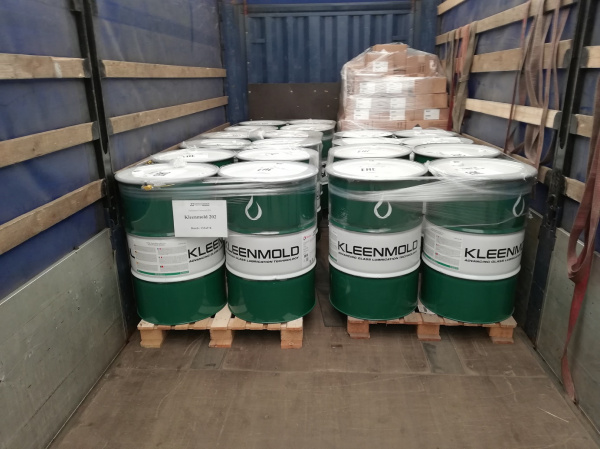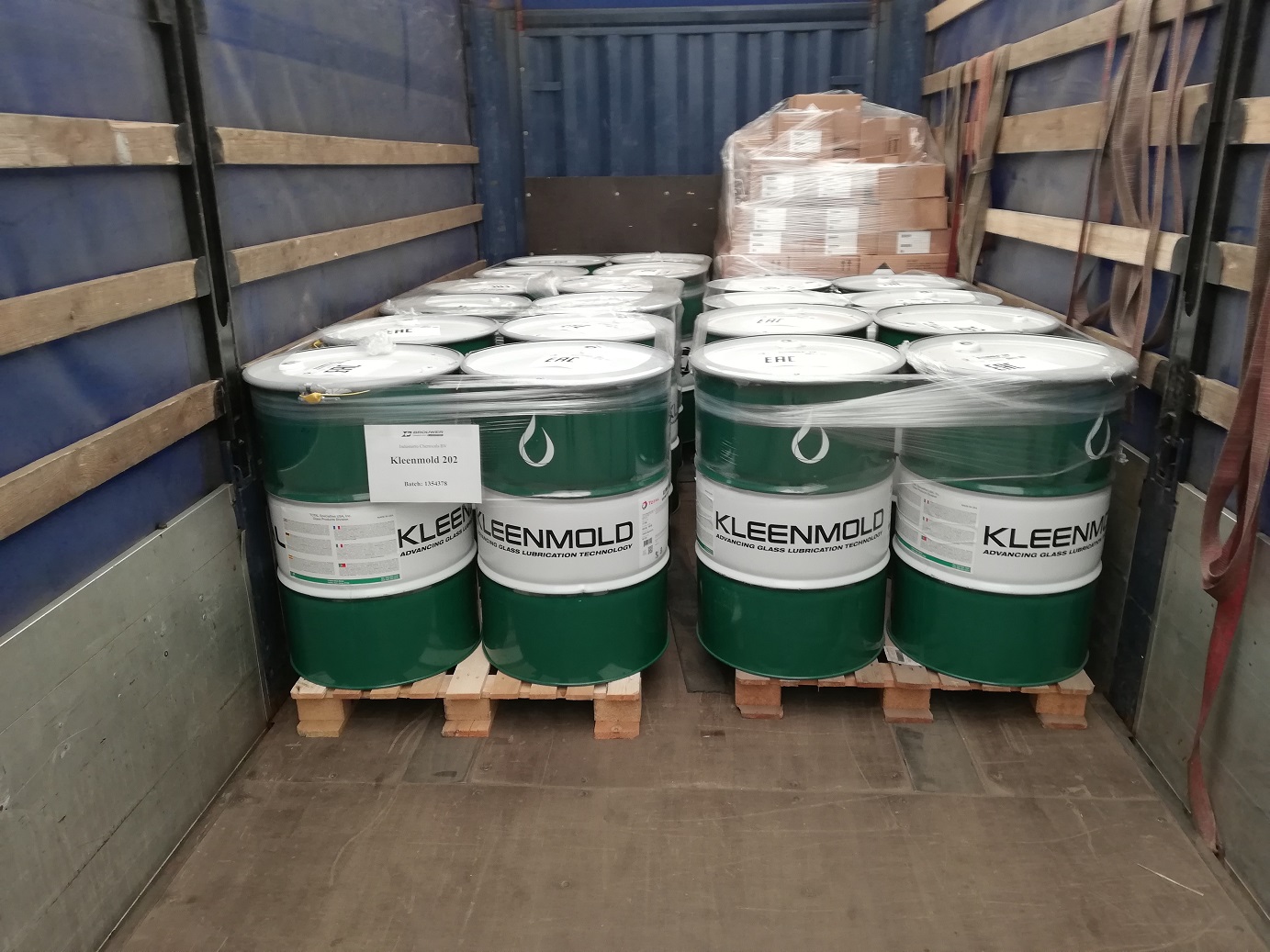Glasskote SC 310
| Appearance | Milky white emulsion |
| Density [25°C] [77°F] | 8.3 |
| Slip Angle | 12 to 16 |
| Scratch Resistance | G.T. 45 Kgs (G.T. 100 lbs) |
| Flash Point |
n/a |
| Dynes Ink |
> 42 |
| Storage life |
12 months in a sealed container at room temperature
|
- Description
- Advantages
- Recommendations for use
Glasskote SC 310 is another special cold end coating designed for bottles which have paper-type seals around the top and use dextrin-based adhesives.
Glasskote SC 310 has a slip angle of between 12-16 which means it will provide good lubrication on high speed filling lines and yet has a dynes ink value of G.T. 42 which is required to ensure good adhesion when using dextrin adhesives. Squaretype Nescafe coffee jarsare a good example of the type of bottles for which the Glasskote SC 310 is designed. Application temperature is between 80° and 130°C [176° to 266°F]. Recommended dilution ratio is100 parts water to 1 part Glasskote SC 310.
Glasskote SC 310 has a slip angle of between 12-16 which means it will provide good lubrication on high speed filling lines and yet has a dynes ink value of G.T. 42 which is required to ensure good adhesion when using dextrin adhesives. Squaretype Nescafe coffee jarsare a good example of the type of bottles for which the Glasskote SC 310 is designed. Application temperature is between 80° and 130°C [176° to 266°F]. Recommended dilution ratio is100 parts water to 1 part Glasskote SC 310.
EXCELLENT BOTTLE APPEARANCE
LUBRICITY AND LABELABILITY
FDA APPROVAL
END-USER APPROVALS
HARD WATER STABILITY [HOWEVER; BEST RESULTS OBTAINED USING
TREATED WATER]
RELIABLE, EASY TO USE, LOW MAINTENANCE
LUBRICITY AND LABELABILITY
FDA APPROVAL
END-USER APPROVALS
HARD WATER STABILITY [HOWEVER; BEST RESULTS OBTAINED USING
TREATED WATER]
RELIABLE, EASY TO USE, LOW MAINTENANCE
WATER QUALITY
Glasskote SC 310 utilizes a non-ionic emulsification system and so the emulsion is stable in hard water of up to 10,000 ppm of calcium or 584 grains of water hardness.However, the problem with hard water is that spotting fromthe water itself will occur even though the water hardness has no effect on Glasskote. For this reason,it is recommended that deionized water be used with a hardness of below 4 ppm as calcium carbonate and the water should be within a pH range of between 7 to 9. An advantage of Glasskote SC 310 over competitive products is that if a problem occurs with the water softener and hard water is mistakenly used, the coldend coating system will keep functioning. We recommend using a water treatment system which keeps the total dissolved solids below 100 ppm. The less dissolved material in the water (the cleanerthe water), the less chance of spotting as the water evaporates.
EQUIPMENT
Glasskote SC 310 is usually applied with an overhead traverse spray. We strongly recommend the use of automatic self-cleaning spray guns made of stainless steel with Teflon internal construction. Other metals such as brass tend to corrode and this corrosion can clog the guns causing what appears to be coating problems.
APPLICATION
Glasskote SC 310 should be applied below the finish at a temperature between 80° and
130°C,[176° to 266°F]. It is usually diluted as 100 parts of water to 1 part ofGlasskote [100 to 1]. Dilution ratios as low as 75 to 1 and as high as 150 to 1 have been reported. The most widely used and recommended dilution ratio is 100 to 1.
PRECAUTIONS
Keep from freezing:
Freezing will destroy the colloidal emulsion and render the product useless. Ordering should be scheduled to avoid shipping during winter months. Storage should be inside.
Bacterial Contamination:
The product as supplied is protected from bacterial attack. However, after it is diluted 100 to 1, the bacterial attack may occur (especially if contamination occurs from external sources). Sodium hypochlorite is an effective bacterial agent when used at a chlorine level of between 8 and 12 ppm. Ordinary household bleach is 5.75% sodium hypochlorite (or approximately 3.4% chlorine). To obtain the desired level of chlorine, add approximately 30 ml of bleach per 100 liters of diluted coating. Only add sodium hypochlorite to the diluted product.
Glasskote SC 310 utilizes a non-ionic emulsification system and so the emulsion is stable in hard water of up to 10,000 ppm of calcium or 584 grains of water hardness.However, the problem with hard water is that spotting fromthe water itself will occur even though the water hardness has no effect on Glasskote. For this reason,it is recommended that deionized water be used with a hardness of below 4 ppm as calcium carbonate and the water should be within a pH range of between 7 to 9. An advantage of Glasskote SC 310 over competitive products is that if a problem occurs with the water softener and hard water is mistakenly used, the coldend coating system will keep functioning. We recommend using a water treatment system which keeps the total dissolved solids below 100 ppm. The less dissolved material in the water (the cleanerthe water), the less chance of spotting as the water evaporates.
EQUIPMENT
Glasskote SC 310 is usually applied with an overhead traverse spray. We strongly recommend the use of automatic self-cleaning spray guns made of stainless steel with Teflon internal construction. Other metals such as brass tend to corrode and this corrosion can clog the guns causing what appears to be coating problems.
APPLICATION
Glasskote SC 310 should be applied below the finish at a temperature between 80° and
130°C,[176° to 266°F]. It is usually diluted as 100 parts of water to 1 part ofGlasskote [100 to 1]. Dilution ratios as low as 75 to 1 and as high as 150 to 1 have been reported. The most widely used and recommended dilution ratio is 100 to 1.
PRECAUTIONS
Keep from freezing:
Freezing will destroy the colloidal emulsion and render the product useless. Ordering should be scheduled to avoid shipping during winter months. Storage should be inside.
Bacterial Contamination:
The product as supplied is protected from bacterial attack. However, after it is diluted 100 to 1, the bacterial attack may occur (especially if contamination occurs from external sources). Sodium hypochlorite is an effective bacterial agent when used at a chlorine level of between 8 and 12 ppm. Ordinary household bleach is 5.75% sodium hypochlorite (or approximately 3.4% chlorine). To obtain the desired level of chlorine, add approximately 30 ml of bleach per 100 liters of diluted coating. Only add sodium hypochlorite to the diluted product.



